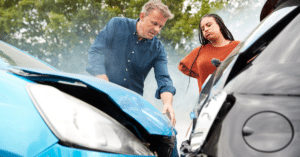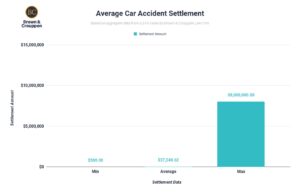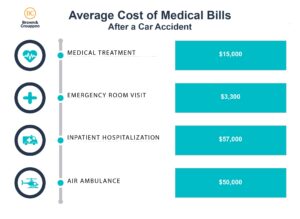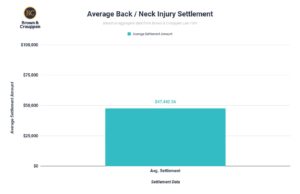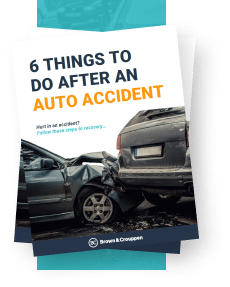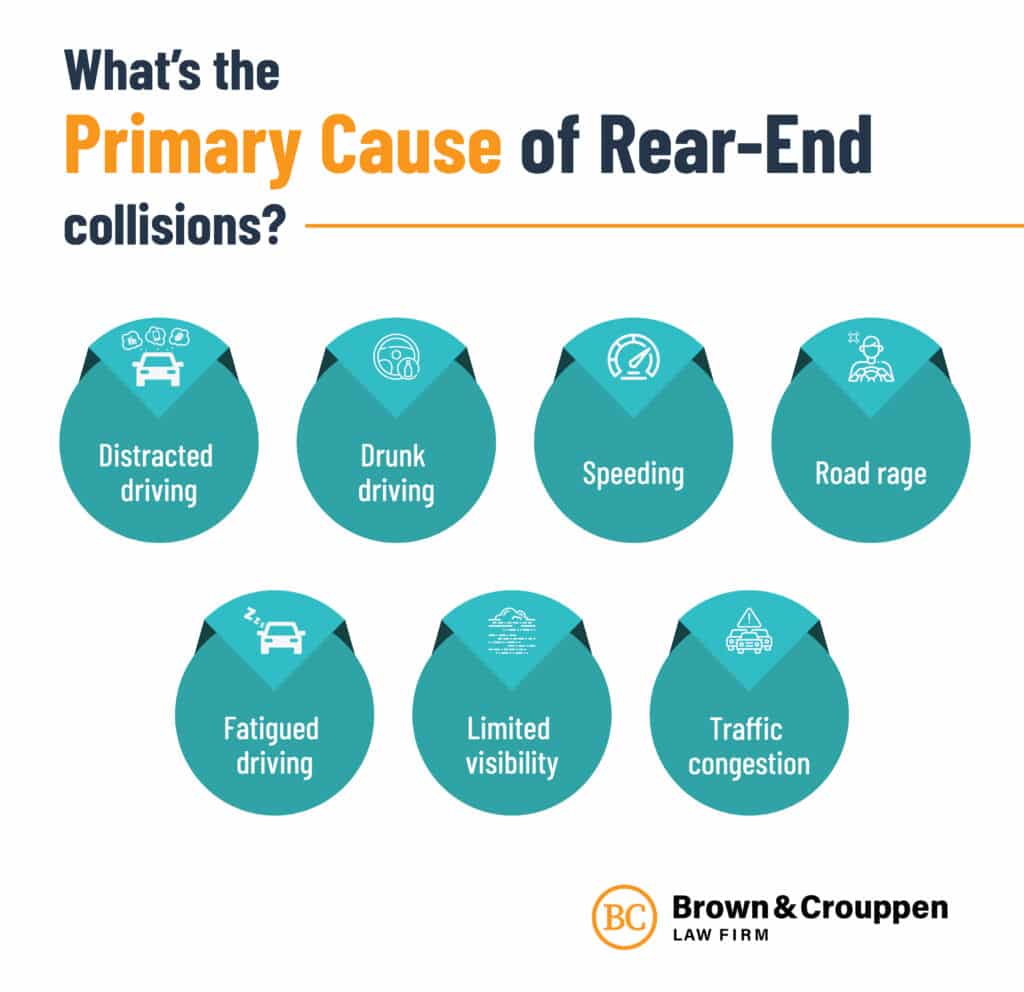
Common Causes of Rear-End Collisions
There are numerous contributory causes to rear-end collisions, and the most common of these include:
Distracted Driving
When drivers take their eyes off the roadway, hands off the steering wheel, and mind off of the act of driving, they become less aware of what is happening around them. They may not react quickly enough if another driver suddenly brakes in front of them or is already at a standstill. Many drivers are guilty of distracted driving, and the most common reasons are texting, talking on the phone, eating food, changing the radio, and other passengers in the vehicle. According to NHTSA statistics, nearly 15,000 people die in rear-end accidents caused by driver distraction each year.
Tailgating
Tailgating is a term used to describe when a driver does not maintain a safe distance away from the lead vehicle. Tailgating leaves insufficient room for the rear vehicle to come to a full-and-complete stop if the leading vehicle stops suddenly. The three-second rule is a widely used method of calculating a safe following distance. When the vehicle in front of you passes a fixed object on the side of the roadway, such as a sign, start counting to three. If you pass the same point before you make it to three, you are following too close and are at risk of a rear-end collision. When following too close, a driver cannot stop in time when the vehicle in front brakes or turns. Never tailgate or drive too close to another driver.
Speeding
Speeding can be a factor in rear-end collisions. According to NHTSA, speeding plays a role in rear-end accidents, and a higher speed generally results in a more severe collision. Speeding often causes serious and dangerous rear-end collisions because the force of impact is greater when the driver does not have time to slow down before colliding with the vehicle in front of them. Additionally, adverse driving conditions, including times of limited visibility, wet or icy roads, or dangerous weather events, call for lowering a driver’s speed even below the posted speed limit.
Reckless Driving
Aggressive drivers tend to drive much faster than everyone else on the road and may engage in other dangerous driving habits, including:
- Weaving in and out of traffic
- Tailgating
- Cutting off other drivers
- Ignoring the right-of-way
- Brake checking (pulling in front of another driver and quickly applying the brakes)
An aggressive driver may be driving too quickly or recklessly to notice a stopped or slowed driver, and this puts them at a heightened risk of causing a rear-end collision. Drivers engaging in road rage may even purposefully hit the rear-end of another vehicle, drive so close that a collision is unavoidable, or cause another driver to rear-end them by brake checking.
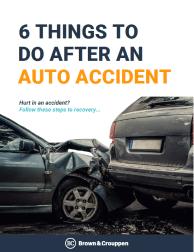

Use our legal checklist to learn what to do after an accident and understand key legal considerations for recovering financial compensation.
Common Locations of Rear-End Accidents In St. Louis
According to St. Louis traffic data, most of the motor vehicle collisions in St. Louis happen at the intersections of:
- Interstate 270 and Interstate 44 near the Powder Valley Conservation Nature Center
- Dougherty Ferry Road and Interstate 270 near St. Luke’s Des Peres Hospital
- Interstate 55 and Interstate 44 near St. Louis’s Gateway Arch
- Manchester Road and Interstate 270 near Des Peres Park
- Interstate 70 and Forest Park Parkway
- South Hanley Road and Interstate 64
Common Injuries Associated With Rear-End Accidents
Rear-end collisions are often referred to as “minor fender-benders.” However, rear-end collisions can result in common injuries and even more severe injuries depending on the impact of the collision. The vehicle in front might also get pushed into other cars or obstacles such as concrete barriers, causing further injury and damage. Serious injuries in rear-end crashes often include:
- Neck Injury – Whiplash is the most common post-accident neck injury. The neck contains joints called facets which are responsible for the neck’s range of motion. A forceful, sudden back-and-forth movement of the neck results in ligament sprains that are called whiplash. This often occurs during a rear-end collision. People may experience whiplash-associated disorders (WAD) for many years after an accident, so immediate treatment is recommended.
- Back Injury – Occurring almost as frequently as neck injuries, back strains and sprains are common in rear-end collisions and often require medical attention. In more severe cases, rear-end collisions can cause slipped or herniated discs, spinal fractures, and compression fractures. Signs that an individual is suffering from one or more back injuries after a motor vehicle collision can include muscle spasms, burning pain, stiffness, sharp pain, discomfort when walking or standing, and tingling or numbness.
- Bone Fracture – Some of the most common bone fractures that occur during rear-end collisions include arm fractures, wrist fractures, back fractures, collarbone fractures, rib fractures, and shoulder injuries (such as rotator cuff tears). For example, because of the collarbone’s delicate nature, the force with which a person’s body travels forward after a rear-end collision puts immense pressure against the shoulder and seatbelt, and this may cause bone breakage. Additionally, because a motorist will have his/her hand on the steering wheel at the time of impact, wrist fractures often result due to the momentum of the driver’s body pressing against the steering wheel.
- Brain Injury – A concussion can be caused by a rear-end collision. A concussion is a type of traumatic brain injury (TBI) that occurs when the head is hit or jolted, causing the brain to move within the skull. In a rear-end collision, the sudden jolt of the head and neck can cause the brain to hit the inside of the skull, resulting in a concussion. Someone injured in this manner will experience headaches, dizziness, nausea, confusion, sensitivity to light or noise, and memory loss.
If you or a loved one has been injured in a rear-end accident, you may be eligible to recover compensation. Getting started with your case is easy. Request a free case evaluation online or call (314) 501-9510.
An auto accident settlement in Missouri is worth approximately $25,446.84. Generally, the average settlement amount of a rear-end accident is often less due to the collision typically being a low speed impact, which tend to result in less damage.
Understanding Who Is At Fault In A Rear-End Accident
Rear Driver Liability – Under the Missouri Rear-End Collision Doctrine, it is presumed that the driver of the rear vehicle is at fault for injuries caused to the driver of the front vehicle. Under this doctrine, the injured driver of the front vehicle is required to show:
(1) That he or she had a right to be on the portion of the roadway;
(2) That he or she was struck from behind by another vehicle; and,
(3) That he or she was not otherwise operating in a negligent manner.
In other words, the rule establishes that all drivers must be in control of their vehicles. It removes the requirement to show that the rear driver failed to exercise their duty of care. Thus, the rear driver is tasked with demonstrating that they were not at fault. In most cases, the driver who rear-ends another is at fault.
Front Driver Liability – Under some circumstances, it may be possible to argue that the lead vehicle in a rear-end crash is at least partially at fault. Some of the most common occurrences that place the fault on the front car driver include:
- If the front driver stopped or braked suddenly without signaling or without giving the rear driver sufficient warning to react.
- If the front driver was driving in a reckless or dangerous manner and this contributed to the accident.
- If the dangerous road conditions, such as poor visibility, wet or slippery road, or debris in the road, made it difficult for the rear driver to stop in time.
- If the rear driver had mechanical issues, such as faulty brakes, which made them unable to stop their vehicle.
Whether or not the driver of the front vehicle is at fault may depend on the speed and distance of the approaching vehicle. If the rear driver was traveling at a safe speed but still didn’t have the time and/or space to stop before impact, they may only be partially liable for the injuries and property damage done to the front driver.
Brake Check Liability – As a common reaction to tailgating, brake checking occurs when a driver hits the brake hard to send a message to the tailgater. Technically, the brake checker does not have a legitimate reason to hit the brake, but the rear driver does not have a legitimate reason to follow the front vehicle at an unsafe distance. Liability under these circumstances frequently comes down to the facts of each specific accident.
Brake checking is not recommended for any driver at any time. This action causes an extreme risk of injury to the person brake checking as well as the person tailgating. Taking into consideration the common types of injuries in rear-end collisions, it’s not worth the risk. If the front driver brake checks the rear driver in an attempt to get the rear driver to slow down or back off, this is not helpful. It’s responding to a reckless driver with more recklessness. If someone is following too closely, it does not give the front driver the right to cause an accident.
Missouri follows pure comparative negligence. This means that even if an injured party is at least partly at fault for the accident, they may still receive compensation. If the injured party was at fault in some way, damages received would be deducted in relation to the injured party’s percentage of fault. So, even if the injured person is 99% at fault for the accident, the court can still award compensation for the 1% of the fault the other party contributed.
Following this logic, the party rear-ending the front car after a brake check may be presumed to be at fault under Missouri law. However, any compensation that the front driver seeks to collect from the rear driver may be reduced by the percentage of fault attributed to the act of brake checking (i.e., 25% fault of brake checker and 75% fault of rear driver).
When To Get Help From A Rear-End Accident Lawyer
When a rear-end collision results in injury, it’s best to consult with an experienced lawyer as soon as possible. An experienced lawyer can help you build a strong case from the very beginning. From the moment of the collision, the clock starts ticking to file a claim against the at-fault driver. In Missouri, the deadline to file a car accident claim is 5 years, unless the collision results in death, which reduces the time to three years. In Illinois, the time is even less with just two years to file a claim.
The choice of a lawyer is an important one and should be decided with careful consideration. If you or a loved one has been the victim of a rear-end collision, the experienced rear-end accident attorneys at Brown & Crouppen can help you seek financial compensation for injuries, medical bills, property damage, and other damages that may have resulted from the car crash.
Get started today with your free case evaluation by visiting Brown & Crouppen Law Firm online or by calling us at (314) 501-9510. Our St. Louis law office is located at 4900 Daggett Ave., St. Louis, Missouri, 63110, and we serve St. Louis County and the greater metropolitan area.


